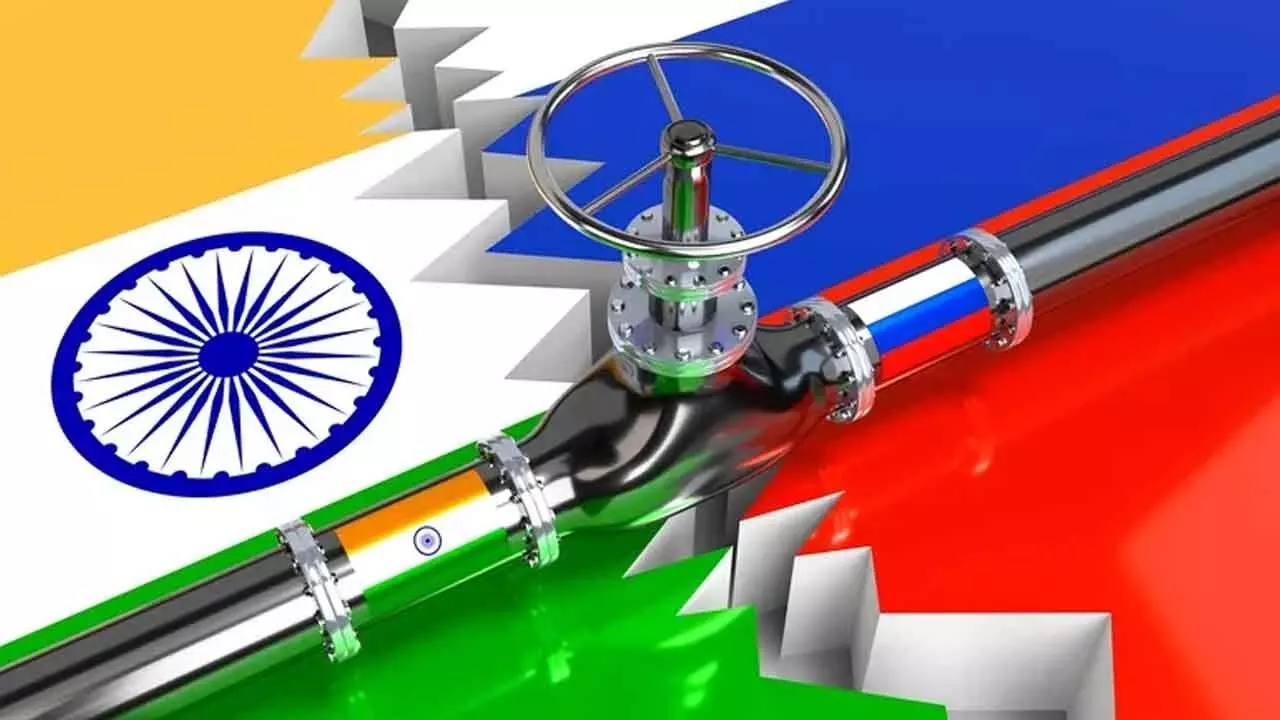US sanctions test India’s energy autonomy and diplomacy
US sanctions test India’s energy autonomy and diplomacy

With the US President Donald Trump once again asserting that India will completely stop purchasing oil from Russia, if India would tilt towards the US or Russia remains a moot question. Mind you that New Delhi still maintains that its energy choices are based on national interests.
Speaking aboard Air Force One on Saturday, Trump claimed that while China is significantly reducing Russian oil imports, India has halted them entirely, citing the latest US sanctions on Russian energy giants Rosneft and Lukoil.
Interestingly, India’s external affairs minister, S Jaishankar had met the US Secretary of State Marco Rubio in Malaysia, where discussions touched on these crucial issues.
Significantly, oil prices jumped more than five per cent after the US sanctions were announced.
Any recalibration, according to experts, would mean paying more for alternative oils. One of the regions, India could look at, would be the Middle East and the price is shooting up.
Reliance Industries, the privately-owned main Indian buyer of Russian crude, for one, is already assessing the implications of Washington’s restrictions, as well as those imposed this week by the European Union.
The European Union’s new curbs include a complete ban on Russian liquefied natural gas (LNG) imports by the end of 2026. Indian oil players are confident that its ‘time-tested, diversified crude sourcing strategy’ would ensure stability in refinery operations for meeting the domestic and export requirements, including to Europe.
India, one of the world’s largest crude oil importers, relies on foreign suppliers for 85 per cent of its oil needs.
Long dependent on Middle Eastern producers, India began purchasing heavily discounted Russian crude in 2022, capitalising on Western sanctions that limited Moscow's export options. India imported just over 1.6 million barrels per day from Russia in September.
Just before the sanctions, expertd had said that the economics were compelling
Russian barrels remain deeply embedded in India's energy space.
Russian crude still remains structurally vital for India, accounting for roughly 34 per cent of its total imports and offering compelling discounts that are too significant for refiners to ignore.
Analysts ate of the view that it would not be technically difficult for Indian refiners to adjust.
Indian refiners can easily pivot away if needed, the trade-off would be mainly pressure on refining margins.
At this outset, one must remember that economic relations between India and Russia are characterized by a high volume of trade, heavily skewed towards oil and petroleum products imported by India, and a focus on strengthening strategic ties in sectors like energy, infrastructure, and technology.
Bilateral trade surged to a record high of $68.7 billion in FY 2024-25, primarily due to a 13-fold increase in India’s imports of Russian crude oil and refined petroleum products, which reached $63.84 billion, while India’s exports stood at $4.88 billion.
The relationship has been reinforced through a mutual goal of boosting investment to $50 billion by 2025, with Russia investing in India’s energy, banking, and steel sectors, and India’s investment primarily in Russia’s oil and gas and pharmaceutical sectors.
Total bilateral trade reached $68.7 billion in FY 2024-25, a significant increase from previous years. India’s imports from Russia are dominated by petroleum products (including crude oil), fertilizers, and mineral resources. Russia has become India’s largest oil supplier.

